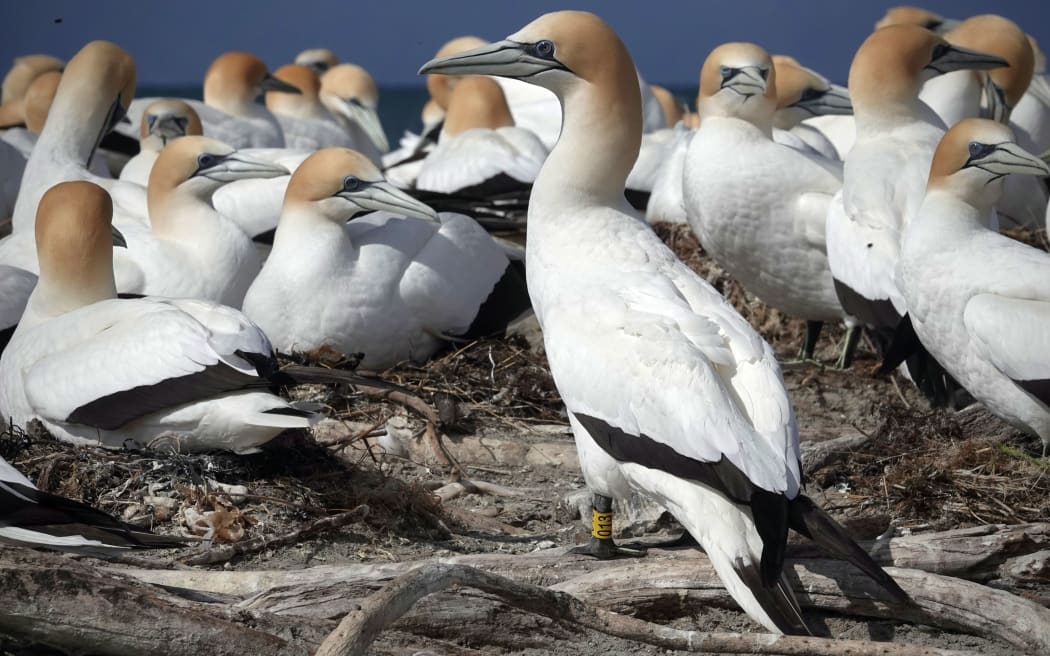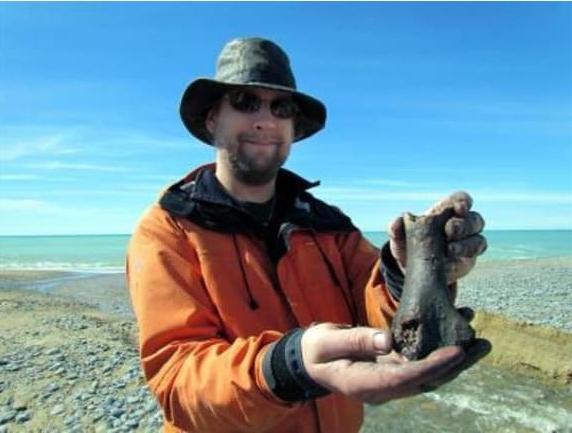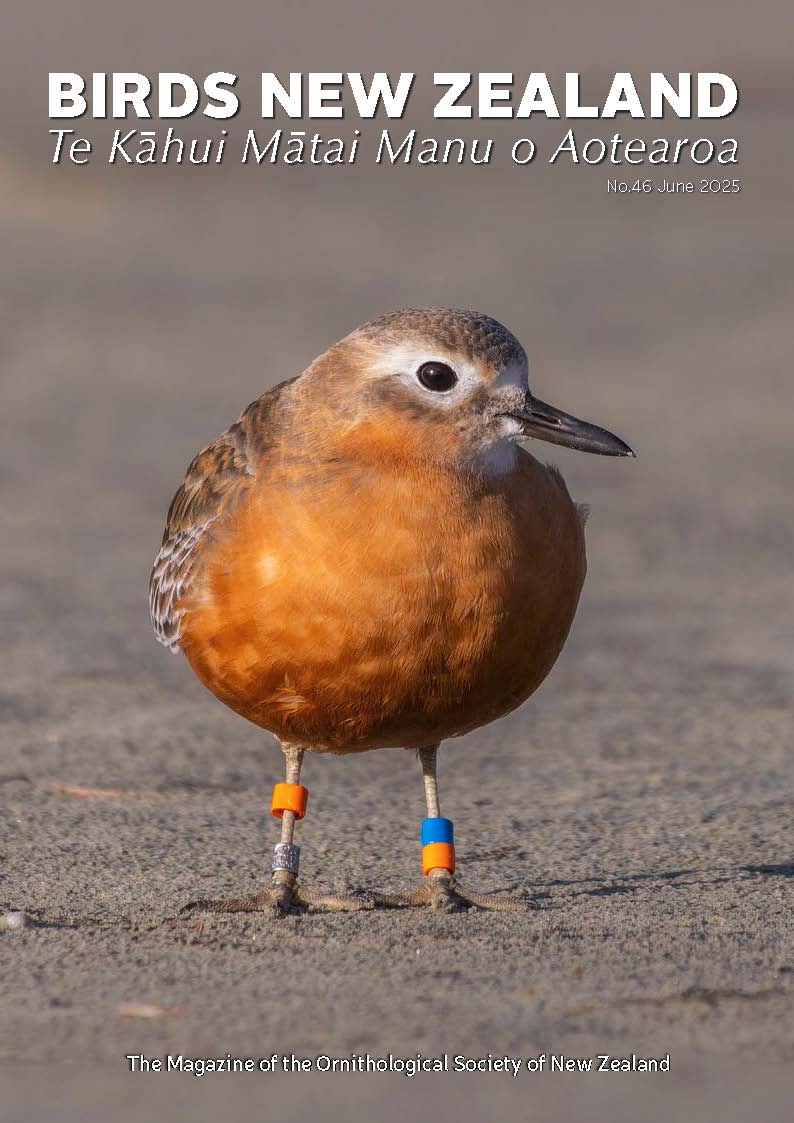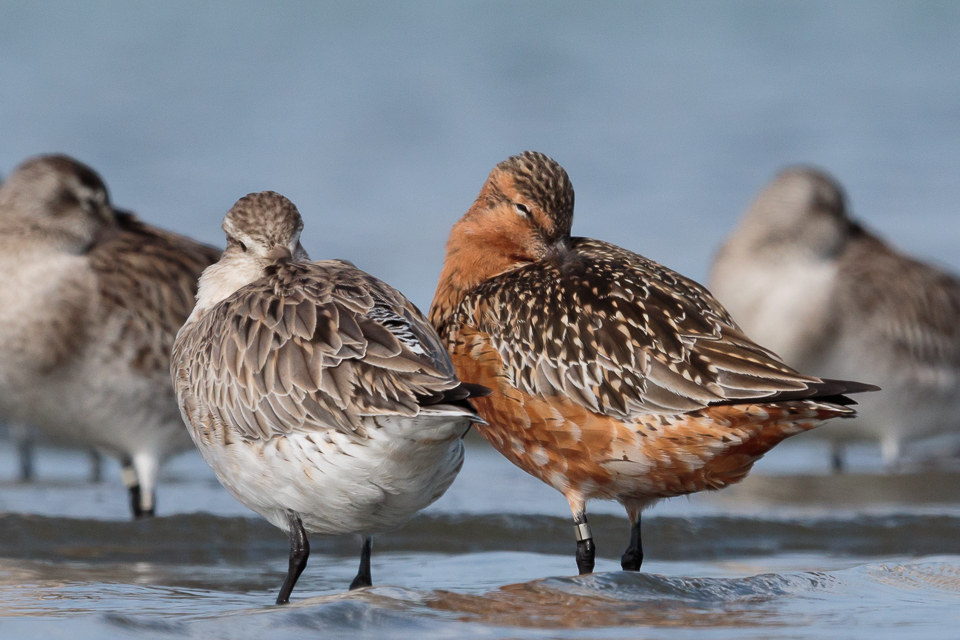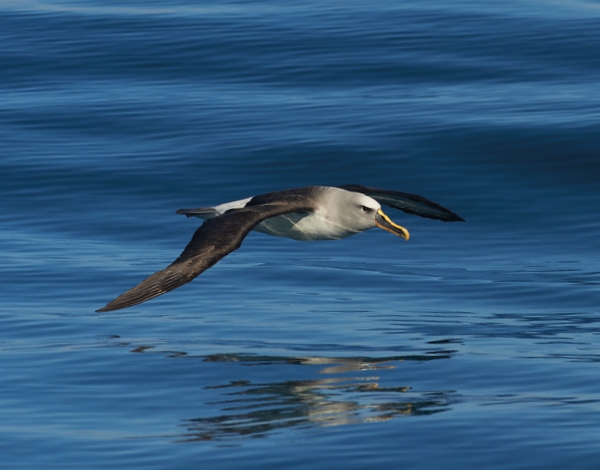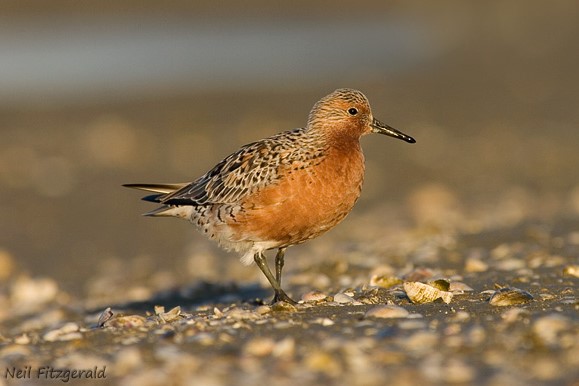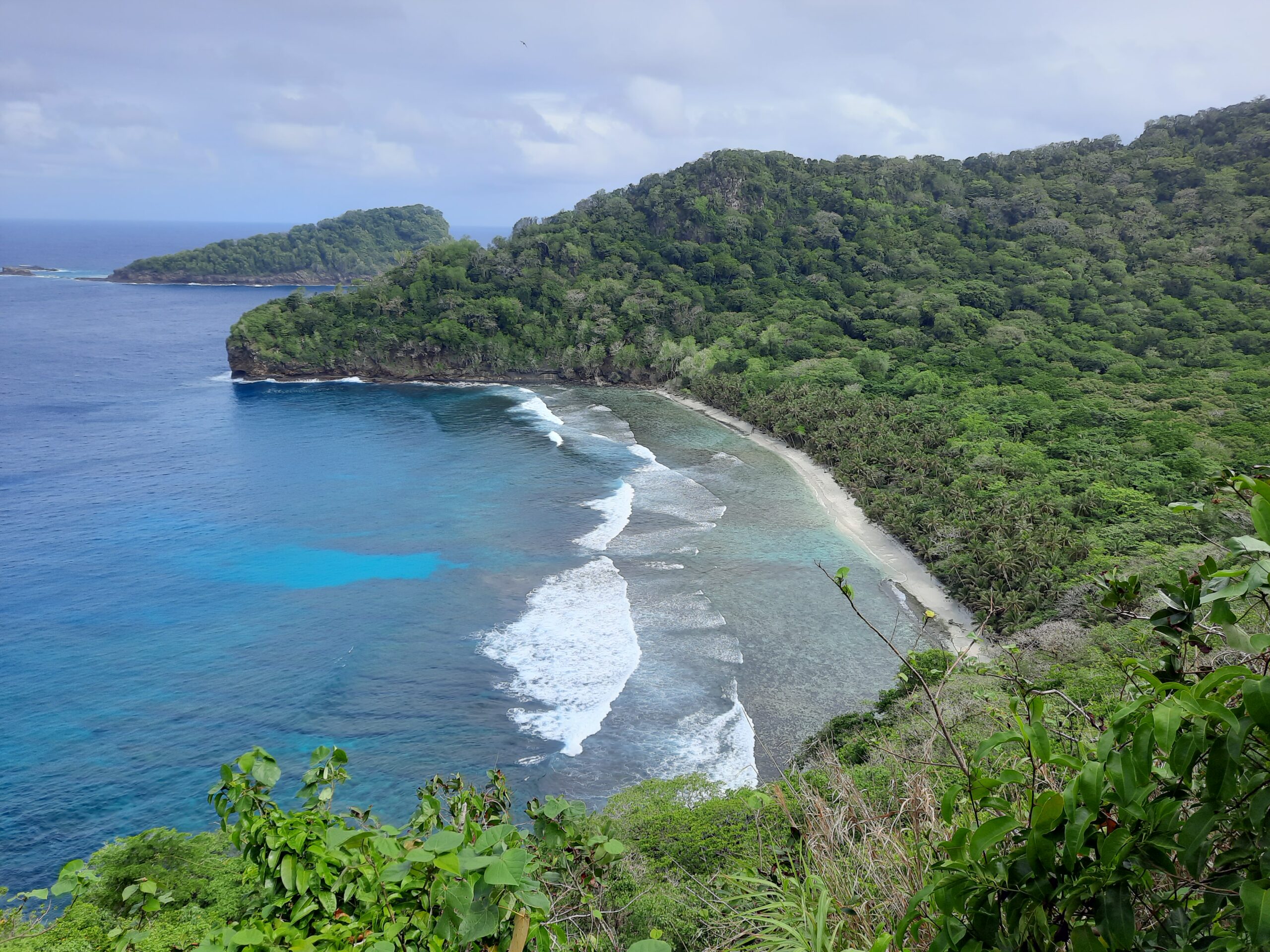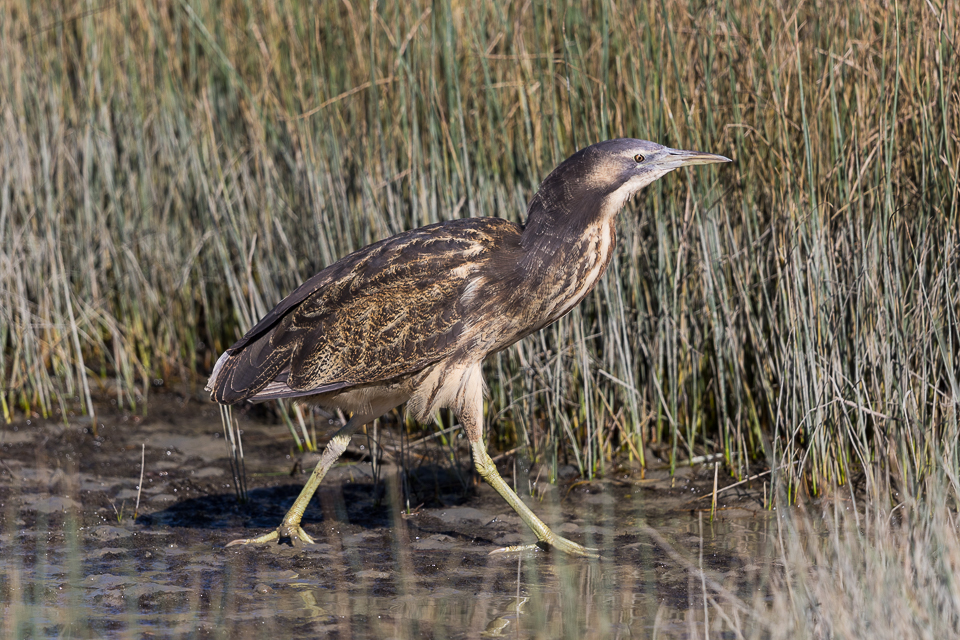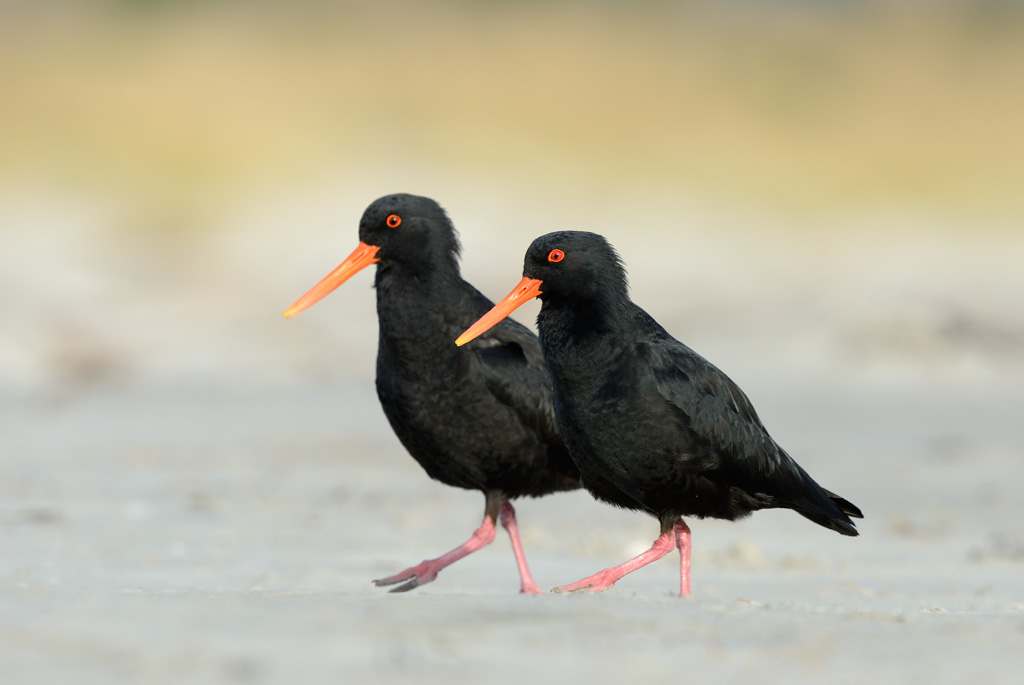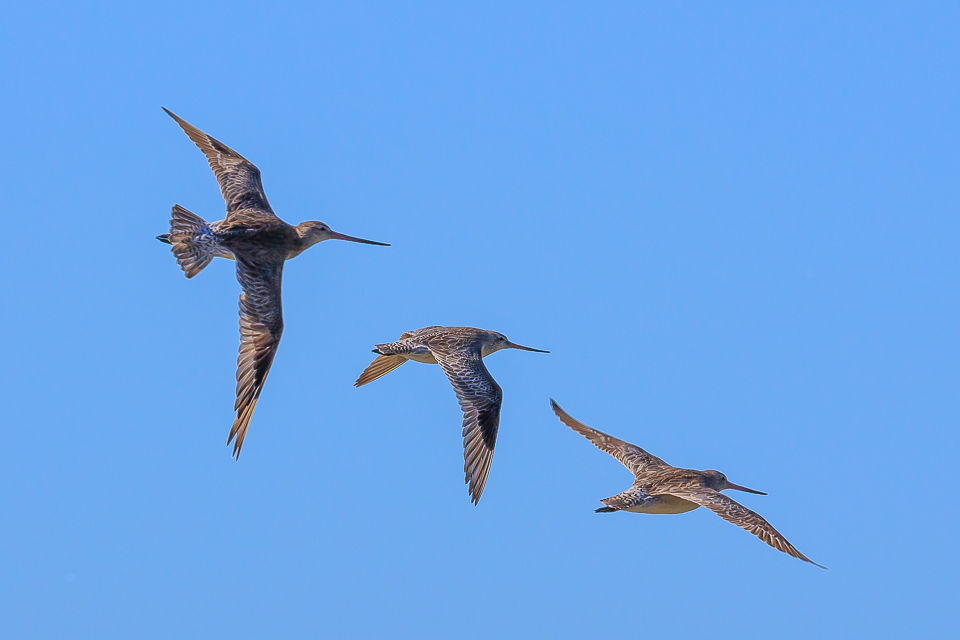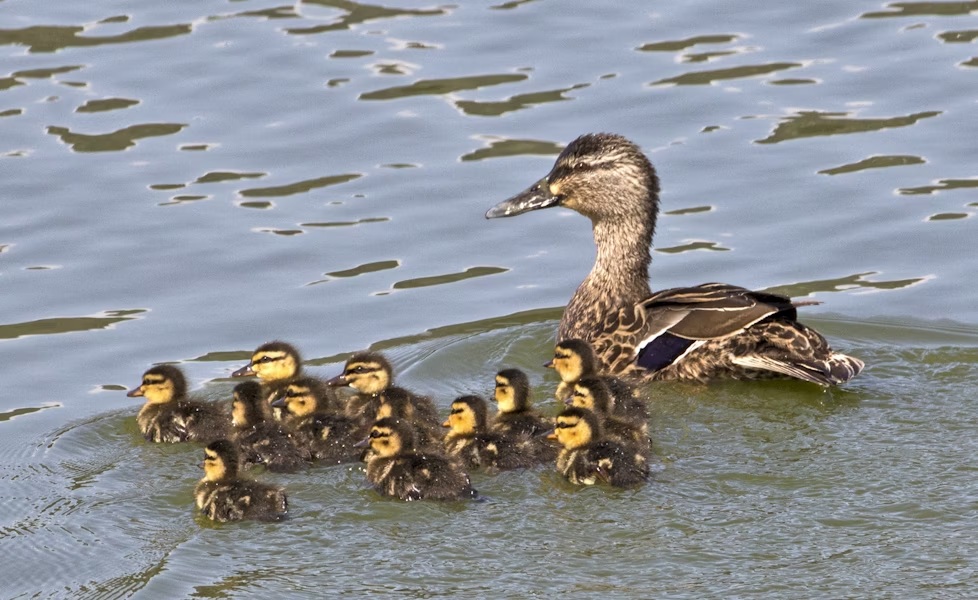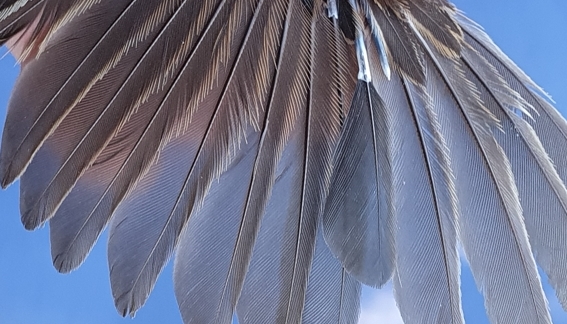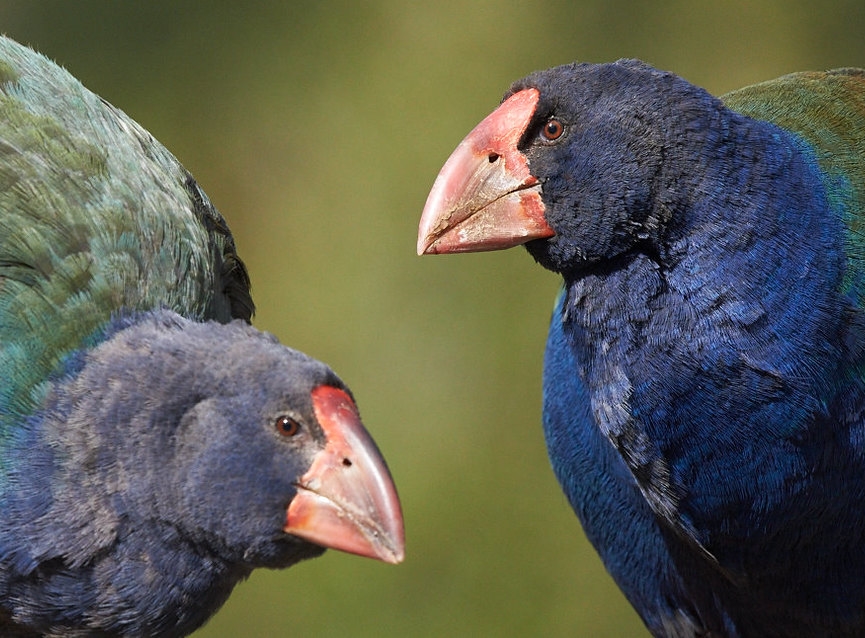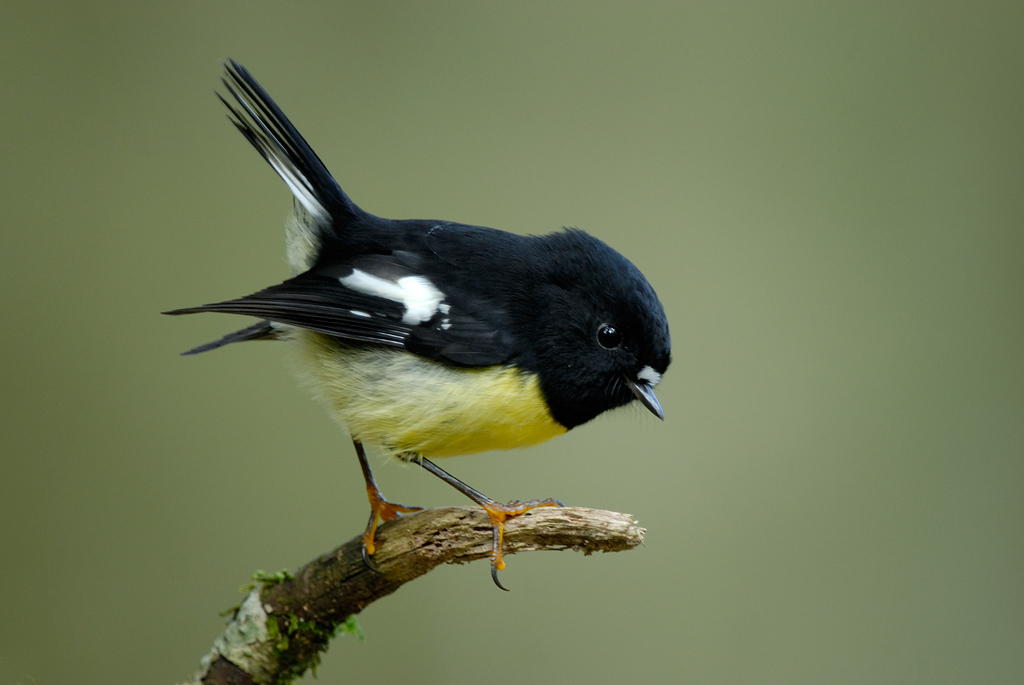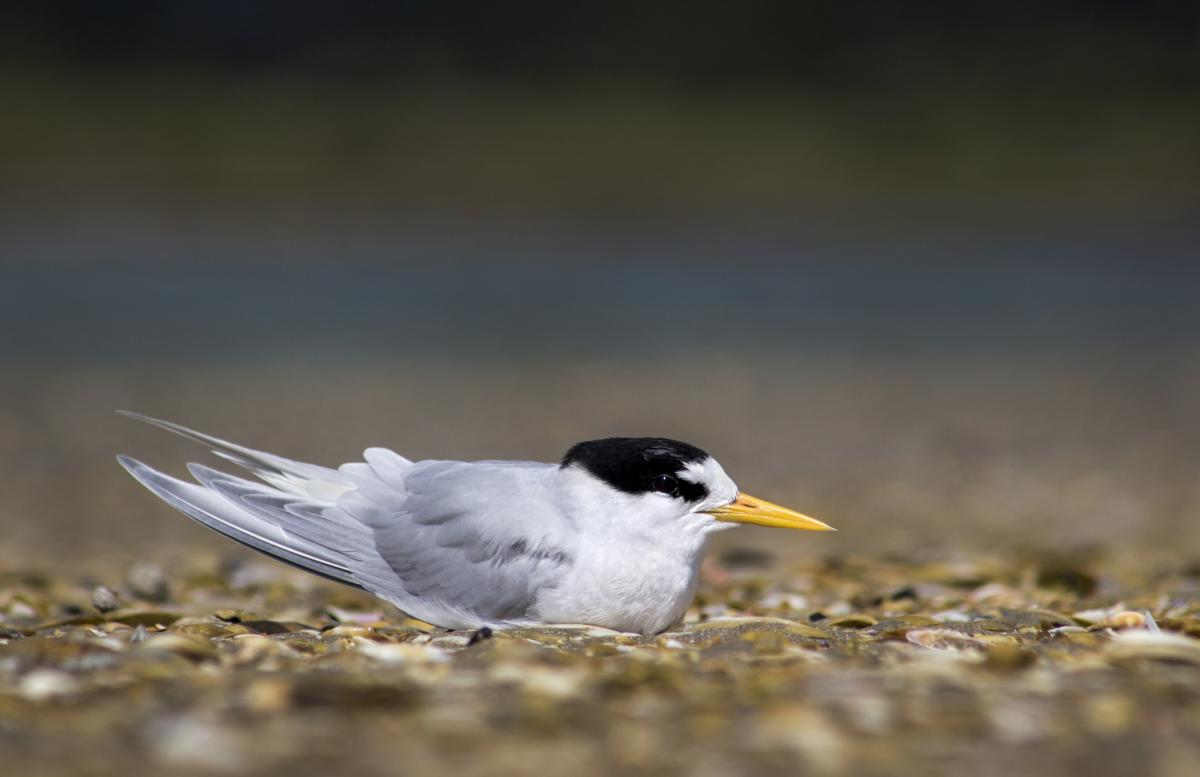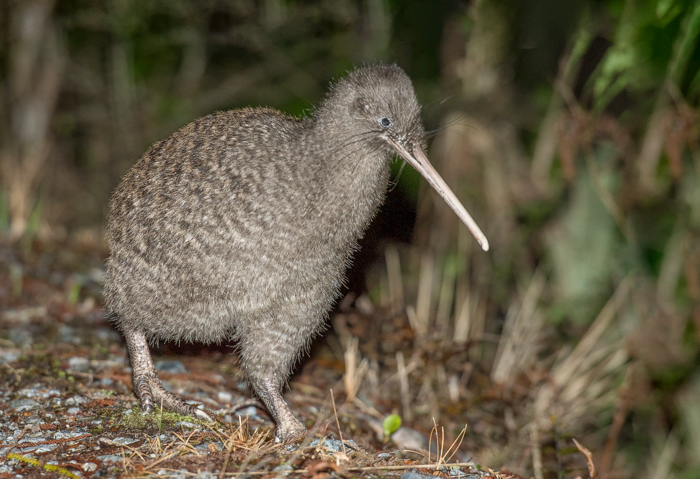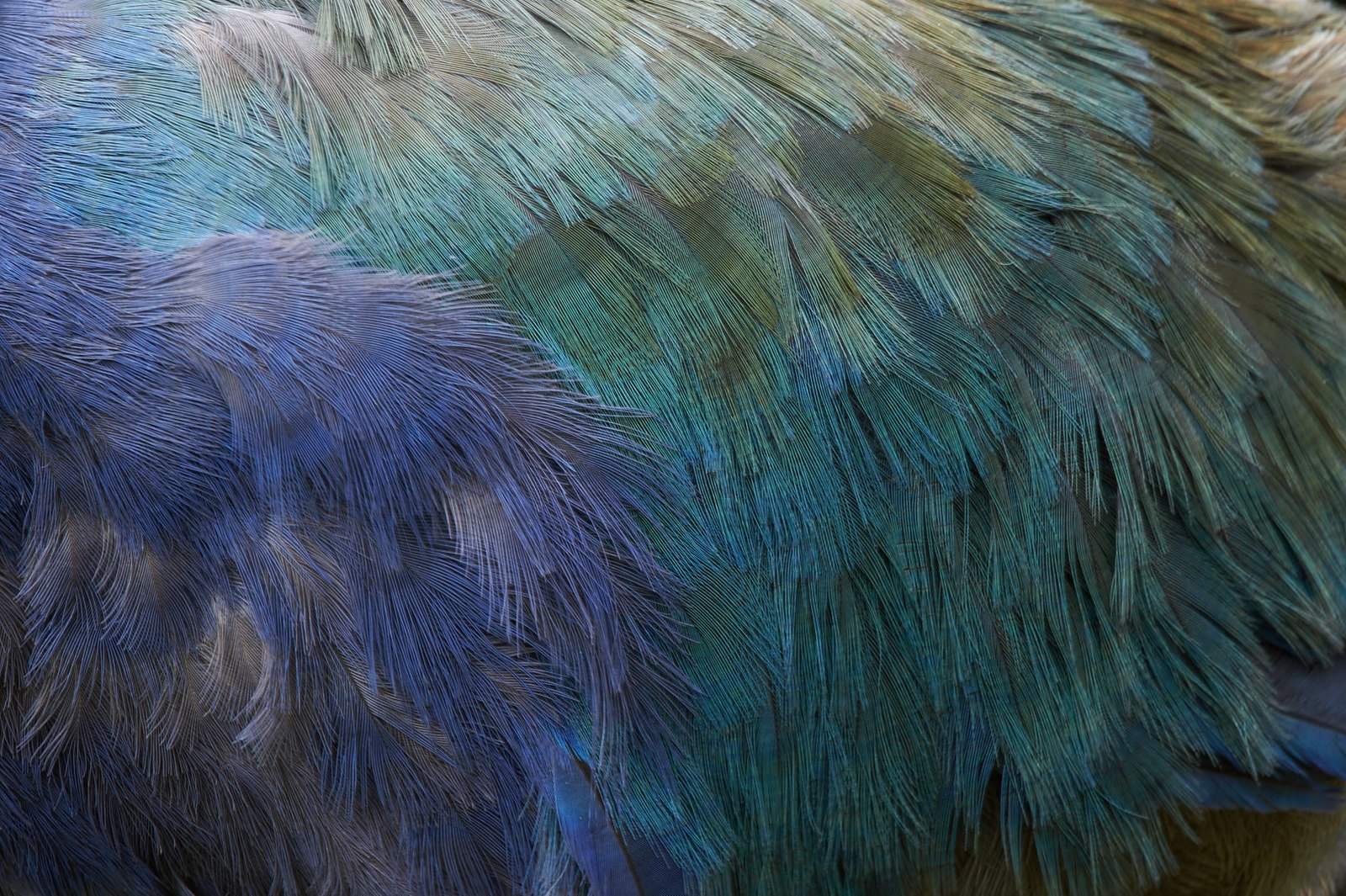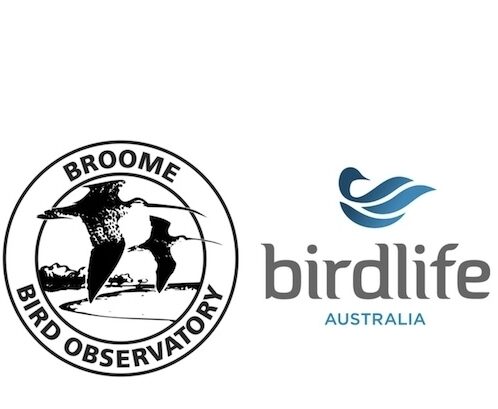Author: EO
Our Changing World: Getting ready for H5N1 bird flu
June 24th, 2025Highly pathogenic H5N1 bird flu has been around since the 1990s, but the current bird flu pandemic started in Asia in 2020, when a low pathogenic strain mutated into a high pathogenic strain called H5N1 2.3.4.4b. Read more about this on the RNZ news story: https://www.rnz.co.nz/news/ourchangingworld/564326/our-changing-world-getting-ready-for-h5n1-bird-flu
New Council Member – Nic Rawlence
June 23rd, 2025I grew up in Nelson and Golden Bay surrounded by birds above ground and the bones of extinct birds in caves below ground. I spent much of my childhood in the outdoors amongst nature and sailing in Tasman Bay. Every family road trip was a lesson in natural history, geology, palaeontology, and history, something that I’ve continued with my kids.
After completing a degree in Biomedical Science at Victoria University of Wellington, New Zealand’s birds beckoned and I embarked on a Masters research project focusing on the evolutionary history of kakariki. I spent many weekends on Mana and Matiu Somes Island, and conducted fieldwork in the subantarctic and at the Kermadec Islands, experiences that I will never forget. A PhD at the University of Adelaide followed where I used ancient DNA and palaeontology to reconstruct the diet and plumage of New Zealand’s extinct moa, as well as investigating the impacts of climate and habitat change through time on these giant birds.
In 2013 my wife and I made the move to back to New Zealand where I established the Otago Palaeogenetics Lab at the University of Otago. My lab reconstructs what New Zealand’s ecosystems were like from hundreds of years to tens of millions of years ago; how our unique living and extinct birds (and other animals) responded to our dynamic geological, climatic and human history; and how we can use that information for evidence-based conservation management.
I passionately believe in science communication, and regularly provide expert commentary in all forms of media from print to radio and television, even busting a few myths now and then.
For contact details of current Council members refer to https://www.birdsnz.org.nz/contact/
Notornis – June edition published
June 18th, 2025The latest issue of Notornis (Volume 72, Part 2, June 2025) has been published and is available via the Current Quarterly Publications page, or click on the links below.
FULL ISSUE:
Changes in the bird community of Auckland Domain’s urban forest between 1987 and 2020
Records of petrels (families Oceanitidae and Procellariidae) in the Cook Islands, 1970 to present
Dispersal of invasive Berberis glaucocarpa in secondary forest occurs mainly by exotic frugivores
GPS tracker trial on kea (Nestor notabilis) at Aoraki/Mount Cook National Park
Birds observed and collected by the Austrian Novara Expedition when in New Zealand, 1858–1859
SHORT NOTES:
First record of Kermadec petrel (Pterodroma neglecta) near the New Zealand mainland
New Zealand pipit (pīhoihoi, Anthus novaeseelandiae) preying on a gecko
First record of Horsfield’s bronze-cuckoo (Chrysococcyx basalis) in New Zealand
Monitoring endemic forest birds on Atuanui/Mount Auckland between and within years
June Birds New Zealand magazine published
June 18th, 2025The June 2025 Birds New Zealand magazine has been published with a cover photo featuring a Pukunui Southern New Zealand Dotterel taken by Oscar Thomas. This edition contains the results of the 2024/25 nationwide Royal Spoonbill colony and nest survey, and the latest Southern New Zealand Dotterel survey.
There is also news of the translocation of Little Spotted Kiwi to Brook Waimarama Sanctuary and Orange-fronted Kakariki to Anchor Island, and of Kakapo booming on the North Island mainland for the first time in almost a century.
It also includes the 2024 annual reports of the Wader Census, Beach Patrol Scheme, Bird Moult Scheme, Nest Monitoring Scheme, and the Records Appraisal Committee, and reports on the OSNZ Specimen Records Project and changes in the way our scientific journal Notornis is produced and published.
It also contains articles on identifying Swamp Harriers and New Zealand Falcons, and on two projects funded by the Birds New Zealand Research Fund to survey shorebirds along Manawatu rivers and study feather moult in North Island Fernbirds.
There is an illustrated feature article on the 2025 Western Pacific Odyssey voyage from New Zealand to Japan, and an article on the regional distribution of birds in Aotearoa New Zealand, both by Oscar Thomas.
There is also news of successful Banded Dotterel protection activities in the Auckland and Hawke’s Bay regions, and short items on Upland Moa, Tieke and Hihi foraging on colourful fungi.
It also includes the regular report of Birds New Zealand President Natalie Forsdick, and the illustrated quarterly reports from all 14 of Birds New Zealand’s regional representatives from the Far North to Southland.
Link to the magazine: https://www.birdsnz.org.nz/publications/birds-new-zealand-magazine-5/
Manawatu Newsletter
June 11th, 2025Download the latest Manawatu newsletter here
Other recent newsletters from around the regions are available here
Free Book for New Members!
June 2nd, 2025New members of Birds New Zealand now receive a free copy of New Zealand Seabirds – a natural history by Kerry-Jayne Wilson!
Valued at $50 and published in 2021 it has 136 pages, including over 100 colour photos and maps. Please note the offer applies while stocks last and excludes overseas and family subscriptions.
Join now and get your free copy: https://www.birdsnz.org.nz/membership/
Get a bird’s eye view with our free e-newsletter!
June 2nd, 2025Get updates on the results of new bird research, seasonal tips on birds to watch out for and how to improve your ornithological and birding skills, and ways to get involved with our regular surveys and field trips.
Link to: https://www.birdsnz.org.nz/sign-up-for-e-newsletter/#!form/eNewsletterSignUp
Seabird Surveys of Aleipata Samoa Offshore Islands
May 19th, 2025Funding from the Birds New Zealand Pacific Islands Bird Conservation and Research Fund was used to support seabird surveys and monitoring training for staff from the Ministry of National Resources and Environment and the Samoa Conservation Society. The Secretariat for the Pacific Regional Environment Programme and the Northern New Zealand Seabird Trust provided this training.
The islands are rich in biodiversity and both marine and terrestrial ecosystems support significant populations of seabirds; They are the most important islands for red-footed (Sula sula) and brown boobies/Fua’ö (S. leucogaster) and greater frigate birds/Atafa (Fregata minor) in Samoa. They host two species of fruit bats, coconut crabs and marine turtles including the most important nesting sites for hawksbill turtle (Eretmochelys inbricata) in Samoa.
The islands also support populations of a species of threatened terrestrial bird – the friendly ground dove/Tu’aimeo (Gallicolumba stairi), IUCN threat ranking Vulnerable. The Critically Endangered manumea (Didunculus strigirostris) has been recorded there in the past.
During 2022 and 2023 visits to the two islands of Nu’ulua and Nu’utele were conducted. One of these islands is rat/pig free Nu’ulua while Nu’utele still had rats and pigs. In addition to visual count surveys and burrow searches, song meters were left on the islands to detect procellariid petrels.
During the survey period, Tahiti petrel (Pseudobulweria rostrata) ranked by the IUCN as Near Threatened, and tropical shearwater (Puffinus dichrous) have been confirmed as likely breeding on Upolu, the island where the main town of Apia is situated. The presence of a wide range of predators as well as habitat modification suggests that these seabirds are likely to be in decline.
Visual surveys confirmed seven breeding diurnal seabird species as well as tropical shearwater present in small numbers based on calls heard on song meters. The continued presence of tropical shearwaters on Nu’utele despite presence of rats and pigs is particularly welcome as it is likely recovery would be rapid following eradication of rats and pigs. Eradication of rats and pigs is currently underway supported by Island Conservation through the NZMFAT funded PRISMSS Restoring Island Resilience project through SPREP.
These two islands are important refuges for seabirds and other fauna and have great potential in terms of restoration. This is particularly so as control of predators on the main islands of Samoa is very limited hampered by vast forested mountainous areas which make access very difficult (note there are no helicopters in Samoa) and funding. Finding remnant populations of procellarid seabirds and protecting them on the main islands is a priority. Use of passive sounds attraction on the island of Nu’utele to attract other procellariid species should also be considered.
Read the final report of the Seabird Surveys of Aleipata here
Find out more about the Birds New Zealand Pacific Islands Bird Conservation and Research Fund here
Waikato Newsletter
April 19th, 2025Download the latest Waikato newsletter here
Other recent newsletters from around the regions are available here
Nelson Newsletter
April 19th, 2025Download the latest Nelson newsletter here
Other recent newsletters from around the regions are available here
South Auckland Newsletter
April 16th, 2025Download the latest South Auckland newsletter here
Other recent newsletters from around the regions are available here
Game bird banding in New Zealand
February 19th, 2025Birds New Zealand is delighted to announce publication of Murray Williams’ A synopsis of game bird banding in New Zealand to year 2000
This fascinating account of the history of game bird banding in Aotearoa has been published as part of our OSNZ Occasional Publications series.
Image by Rebecca Bowater (NZ Birds Online)
An online workshop inspiring renewed interest in moult studies
February 14th, 2025An online workshop about recording moult in the plumage of birds was held by Birds New Zealand on 5th February 2025.
Nearly 100 participants took part in the online workshop. Proceedings were recorded and will be made available as an educational resource on the Birds New Zealand website. Funding for the workshop was provided by the Birds New Zealand Research Fund.
Read more details here
Horsfield’s bronze-cuckoo added to the New Zealand list
January 29th, 2025Aotearoa New Zealand is a long way from anywhere. Despite being 2,000 km from the nearest continent, vagrant land birds regularly find their way across the Tasman Sea – though some don’t quite make it. Bird curator Colin Miskelly describes the latest new species to come to grief on our shores.
Read more at https://blog.tepapa.govt.nz/2025/01/22/a-new-bird-for-new-zealand-horsfields-bronze-cuckoo/ and https://www.nzbirdsonline.org.nz/species/horsfield-s-bronze-cuckoo
Notornis – December edition now online!
January 28th, 2025The December edition of Notornis is now available to read or download online on the Current Quarterly Publications page
A fully searchable database of Notornis articles and Birds New Zealand magazines is provided in the Publications archive
Te Araroa birds – Interview with Dr Colin Miskelly
January 27th, 2025Walking the length of New Zealand counting every bird!
Listen to the interview with Dr Colin Miskelly about atlasing birds along Te Araroa Trail on youtube (by Adam Forbes): https://www.youtube.com/watch?v=qBv7zJxtgfA
Auckland Programme
January 23rd, 2025Download the latest Auckland Regional Programme here
Other recent newsletters from around the regions are available here
Changes to the New Zealand Checklist
December 9th, 2024The 6th edition of the Checklist of the Birds of New Zealand can now be viewed on the Checklist page https://www.birdsnz.org.nz/society-publications/checklist/
The previous editions of the Checklist were published in 1953, 1970, 1990, 2010 and 2022, with the first four published as books and the 5th edition (2022) published as a pdf and as html webpages.
The 6th edition exists solely as updated webpages, with explanations of what has changed and why contained within the manuscript:
Amendments to the 5th edition (2022) of the Checklist of the Birds of New Zealand. Notornis 71(3): 93–114.
The amendments document can be viewed at https://www.birdsnz.org.nz/wp-content/uploads/2024/12/Checklist_Notornis_713_93-114.pdf
This signals a new phase in the evolution of the Checklist, which the Checklist Committee intends to update every 2 years. We have yet to decide whether to produce occasional pdf versions of the entire Checklist (e.g. once a decade), or whether the Checklist will exist solely as webpages from now on. This will depend partly on whether there is demand for a pdf version from you, the users. It will also be constrained by the technical challenges of creating a pdf from the webpages while ensuring that the content of the two versions remains identical.
The New Zealand checklist is a much more complex document than most (maybe all) other regional and global checklists. In addition to the basic list of scientific names (with authorities) and common names grouped within orders and families, it also provides comprehensive synonymies for each scientific name (the history of how and when each name changed after the taxon was originally described), and information on breeding and vagrant distributions. It is also exceptional in containing details for all fossil species.
The main source of new distribution information for vagrant birds in New Zealand are the biennial reports of the Records Appraisal Committee, which have been published in Notornis every 2 years since 2011. The 2023 report was the main source of new distributional information included in the 2024 edition of the Checklist, and Birds New Zealand intends to continue this pattern of the two documents being published in alternate years.
This means that there is now a much more rapid channel for your observations to end up in the Checklist. If you observe a reportable bird and submit an Unusual Bird Report that is accepted by the Records Appraisal Committee, the record should appear in an RAC report within 1–3 years of the UBR being received, and in the next Checklist update within 2–4 years (depending on the date of your UBR submission within the biennial cycle for both publications, and which issue of Notornis the two reports are published in). I know those numbers seem tediously slow in an era when everyone expects up-to-date information at the touch of a smartphone screen. However, it is a huge advance on waiting 20 years for the next Checklist to be published.
I make no apology for the Checklist only citing verified records that can be found in a published paper, rather than citing unverified sightings from online sources, including eBird, that may evaporate for any number of reasons. As an example, I note recent postings on this forum by eBird contributors saying that they have deleted their records or intend to do so.
For those interested in what has actually changed in terms of Checklist content since 2022, we have added three new vagrant bird species to the New Zealand list (black tern, black-naped tern, and Matsudaira’s storm petrel), along with entries for 11 newly-described fossil bird species. Two species splits have been made, with separate entries for Tibetan sand plover and Siberian sand plover (formerly lesser sand plover), and for fulmar prion and Pyramid prion. Genus changes include: sand plovers, red-capped plover, New Zealand dotterel and banded dotterel shifting to Anarhynchus; New Zealand shore plover and black-fronted dotterel returning to Charadrius; and banded rail returning to Hypotaenidia. Fairy prion is recognised as having two subspecies, with Pachyptila turtur eatoni being the form of prion that breeds on Heard Island. This means that lesser fulmar prion Pachyptila crassirostris flemingi is endemic to the Auckland Islands, and fulmar prion as a species is endemic to New Zealand (breeding only on Snares, Bounty, and Auckland Islands, but not on the Chatham Islands).
New Zealand Birds Online webpages will be created, updated, and their sequence re-organised to match the 6th edition Checklist of the Birds of New Zealand once I get back to the mainland.
Ngā mihi nui
Colin Miskelly
Checklist convenor
New Funder sought for the Birds NZ Research Fund
November 27th, 2024Birds New Zealand is looking for a new funder to support the Birds New Zealand Research Fund (BNZRF). For the past 12 years the BNZRF has been funded by the T-Gear Charitable Trust, with the promotion, assessment of proposals, selection of recipients and administration of funds managed by Bird New Zealand. We are grateful for the Trust’s support during that time, which saw 124 ornithological research projects receive funding, including many led by researchers starting their ornithological careers. I would now like to invite prospective new funders to contact me via president@birdsnz.org.nz to discuss this new opportunity.
Since 2013, the BNZRF has been a key part of the Aotearoa New Zealand ornithology funding landscape, funding research with a focus on more than 60 bird species, most of which are either At risk of or threatened with extinction, including various penguin, kiwi, albatross and kakariki species plus Kākāpō, Takahē, Kāki Black Stilt, Hihi Stitchbird, Kea, Rock Wren and others. In 2024 alone, the BNZRF received 23 applications, of which 11 were selected for funding.
The research funded has always been of excellent quality, resulting in publications in a range of New Zealand and international scientific journals. BNZRF recipients have included 42 PhD students and 16 MSc students, with about a quarter of them going on to work in conservation. The enthusiasm of these emerging researchers has also contributed to the success of our annual conference.
The research funded has improved the knowledge and understanding of the biology, ecology, breeding success, and vulnerabilities of 63 species across 26 bird families. Of these, about 50% are classed as At Risk, and 33% more are classed as Threatened. This research in turn helps to inform and improve conservation actions and policies.
The research has primarily aimed to learn more about diet and foraging, distribution and abundance, and survival and recruitment. A wide range of methods have been used, ranging from tagging and tracking (banding, GPS monitoring), population censuses (surveys, mark-recapture), to the use of tools like genetics and environmental DNA for non-invasive species detection, or dietary composition.
For example, 17 NZ penguin research projects have received funds, including Kororā Little Penguin tracking and foraging studies, Tawaki Fiordland Crested Penguin tracking and population studies, Hoiho Yellow-eyed Penguin tracking and mortality studies, and a population genetics study of all the crested penguin species that breed in Aotearoa New Zealand (Tawaki, Snares, Erect-crested, Rockhopper).
Eleven grants have funded kiwi research, including Roroa Great Spotted Kiwi distribution and abundance, studies of avian diseases that can kill kiwi, and kiwi genetics. Six grants have funded Kuaka Whenua Hou Diving Petrel research, including satellite tracking, a population assessment, and the suitability of new islands for translocations. Four grants have funded Kākāpō research including egg viability, genomics, and portable DNA sequencing. Three grants have funded Tarāpuka Black-billed Gull research including an assessment of breeding productivity and two nationwide censuses.
Two grants have funded research modelling Takahē reintroduction to Kahurangi National Park andgenomics. Others have funded studies of kākāriki genetics, Hihi fertility, and the translocation of Toroa Chatham Islands Albatross chicks to establish a second breeding colony. You can read about all 124 BNZRF-funded research projects here: https://www.birdsnz.org.nz/funding/birds-nz-research-fund/.
BBO – Warden Vacancies
November 4th, 2024BBO are looking for wardens for 2025 onwards. This may be an exciting and rewarding opportunity to live and work at one of the best shorebird sites in the world!
Read details at https://nrmjobs.com.au/jobs/2024/20023383/wardens?back=1
